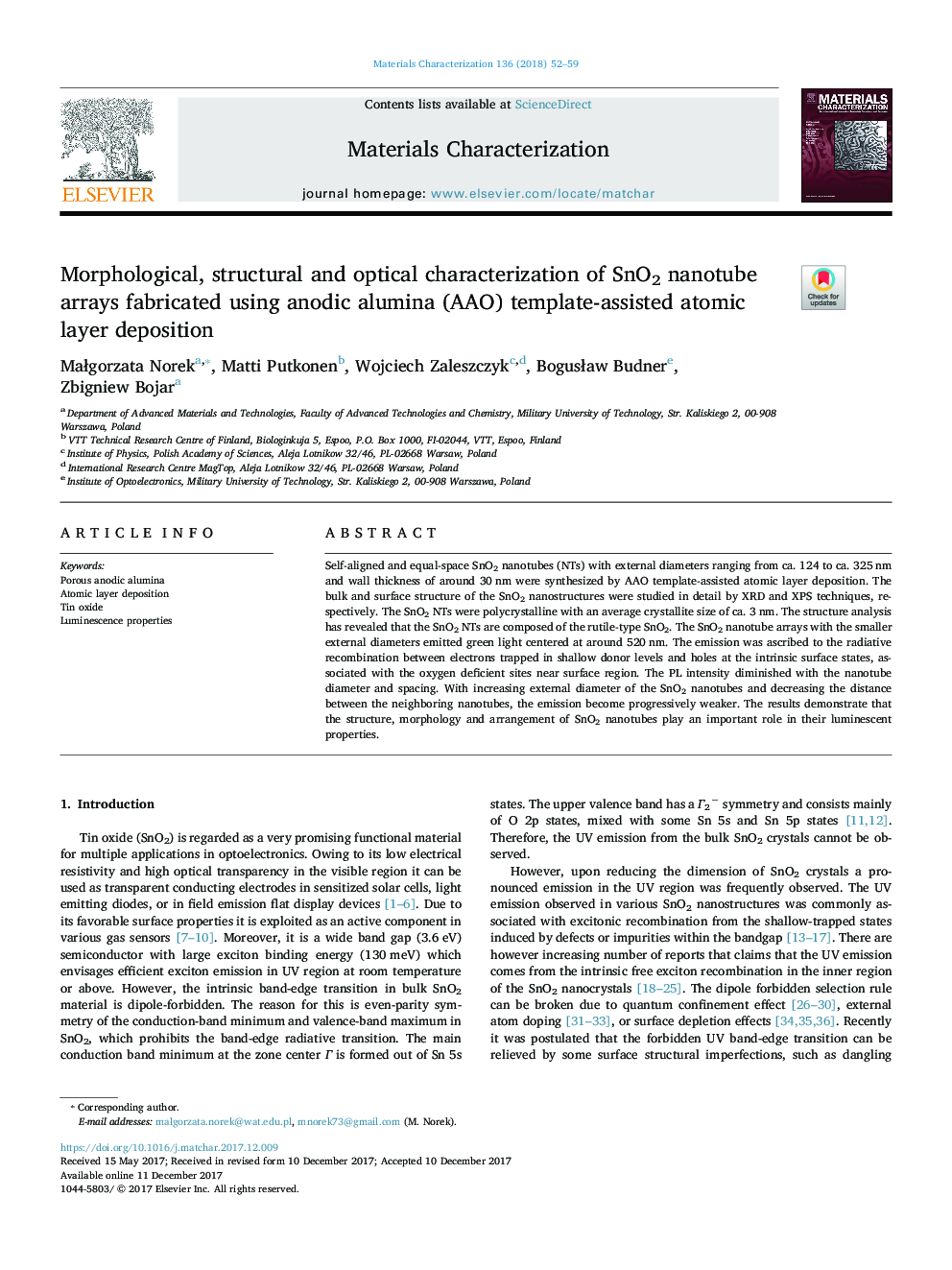| Article ID | Journal | Published Year | Pages | File Type |
|---|---|---|---|---|
| 7969401 | Materials Characterization | 2018 | 8 Pages |
Abstract
Self-aligned and equal-space SnO2 nanotubes (NTs) with external diameters ranging from ca. 124 to ca. 325Â nm and wall thickness of around 30Â nm were synthesized by AAO template-assisted atomic layer deposition. The bulk and surface structure of the SnO2 nanostructures were studied in detail by XRD and XPS techniques, respectively. The SnO2 NTs were polycrystalline with an average crystallite size of ca. 3Â nm. The structure analysis has revealed that the SnO2 NTs are composed of the rutile-type SnO2. The SnO2 nanotube arrays with the smaller external diameters emitted green light centered at around 520Â nm. The emission was ascribed to the radiative recombination between electrons trapped in shallow donor levels and holes at the intrinsic surface states, associated with the oxygen deficient sites near surface region. The PL intensity diminished with the nanotube diameter and spacing. With increasing external diameter of the SnO2 nanotubes and decreasing the distance between the neighboring nanotubes, the emission become progressively weaker. The results demonstrate that the structure, morphology and arrangement of SnO2 nanotubes play an important role in their luminescent properties.
Related Topics
Physical Sciences and Engineering
Materials Science
Materials Science (General)
Authors
MaÅgorzata Norek, Matti Putkonen, Wojciech Zaleszczyk, BogusÅaw Budner, Zbigniew Bojar,
